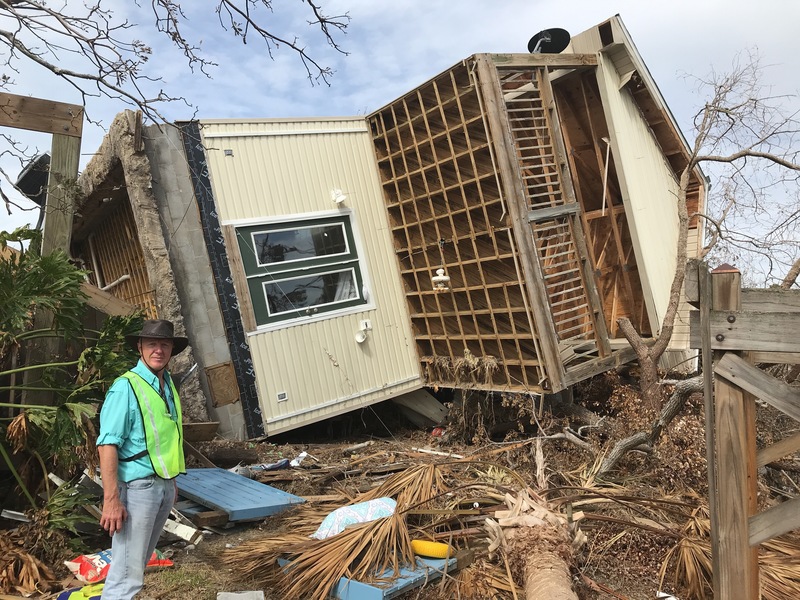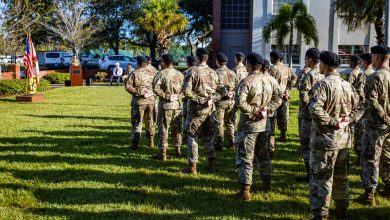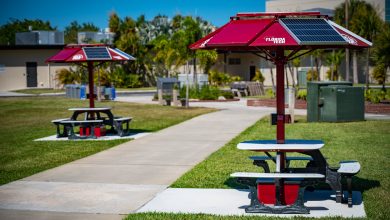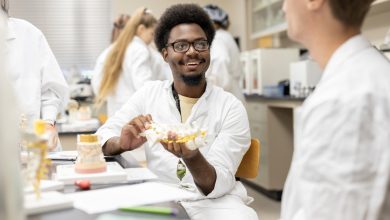Civil Engineering Researchers Conduct Structural Reconnaissance After Hurricane Michael
Jean-Paul Pinelli went to Southeast Asia after Super Typhoon Yolanda in 2013. He traveled to China after the violent tornado ravaged Jiangsu province in 2016. He surveyed the Florida Keys post-Hurricane Irma.
But he has never seen anything like this.

For the most part, the two-story house had weathered the storm fairly well. The glass French doors were intact. The vinyl siding was still attached. The satellite dish sat on the unfazed front porch, and the house clung firmly to the foundation on which it was built.
The structure, however, had one major problem: It lay entirely on its side, foundation and all.
If you tilted your head, you might not have known this house had weathered Category 4 Hurricane Michael just days before.
“It was really surreal—I’ve never seen that before.”
Pinelli, a Florida Tech civil engineering professor, discovered the sideways home, which had been lifted by the hurricane’s immense storm surge and floated like a boat until it hit a tree and capsized, during a trip to the Florida Panhandle as part of the Structural Extreme Event Reconnaissance Network (StEER).
Funded by a two-year National Science Foundation grant, StEER is part of a large-scale research project that aims to protect buildings and infrastructure from natural disasters like hurricanes, floods, tornadoes and typhoons.
As soon as a hazardous event has ceased, usually within a couple days, StEER deploys a preliminary reconnaissance team of about 10 members to the region to assess the damage, determine which areas were most affected and collect as much information—photos, drone footage, street-view camera images, community interviews, etc.—as possible before cleanup begins.

“The ultimate goal is to learn from the disasters and to understand what works and what doesn’t,” Pinelli said. “It is to increase our knowledge of the consequences of the hazards, so we can mitigate and prevent that from happening again—or at least minimize it.”
While their ultimate goal is the same, StEER members approach reconnaissance from different angles depending on their specialties. As a structural and wind engineer, Pinelli evaluates structural damage, specifically, wind damage. Other StEER members evaluate the natural hazard’s scientific, meteorological, social and economic effects.
Regardless of their angle, all StEER members upload the data they have curated to a centralized cyber infrastructure called DesignSafe-CI, a multimillion-dollar project funded by the National Science Foundation, on which Pinelli serves as co-principal investigator.
DesignSafe’s reconnaissance portal provides an interactive map with markers indicating past natural disasters across the globe. The portal, which is aimed at the natural hazard engineering community but is open to the general public, allows users to click on a marker and view all available data sets related to the associated event.
“The idea is that in the future, any data that has to do with natural hazard engineering—not just in the U.S., but worldwide—will be accessible from that website,” Pinelli said.
Pinelli’s StEER involvement also benefits his students and professional research at Florida Tech. Students assist in curating data collected during field research, writing reports and inputting them into DesignSafe. They then utilize the data to validate and recalibrate the risk models they might have previously developed.
While the urgent nature, copious data and valuable research applications of Pinelli’s work with StEER can be overwhelming and even exciting, some cases, like Hurricane Michael, hit particularly close to home.
“It’s not only physical damage. There is a life story behind each of these houses that are destroyed,” Pinelli said. “It could be my house, my family, my community. So, if anything, it makes you more adamant that we need to do something. We need to prepare, and we need to mitigate—it’s critical.”
This article was featured in the 2019 Winter Edition of the Florida Tech Magazine. Click below to read the full edition.






